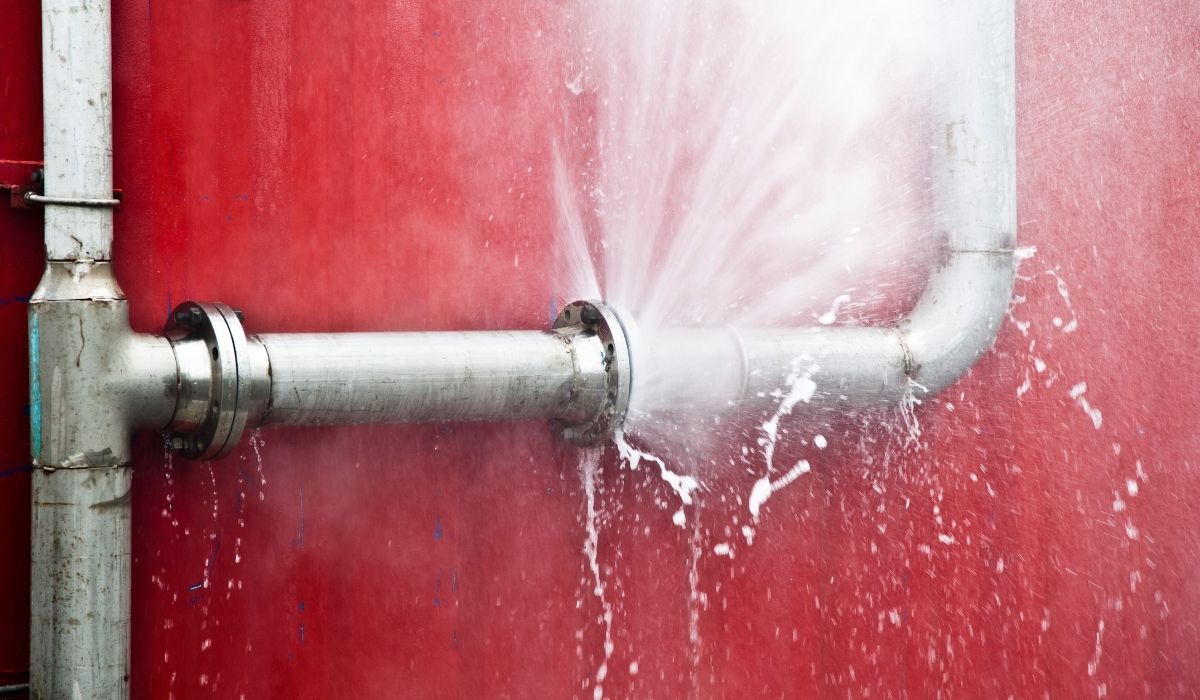Understanding What Is Smoke Damage and Its Impact on Your Home
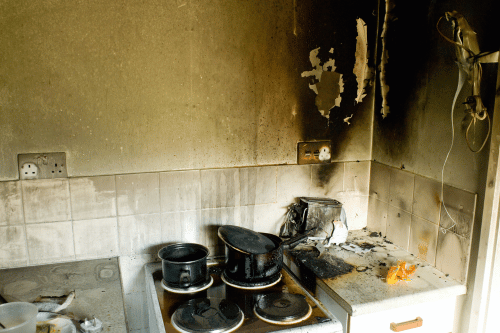
- December 7, 2024

Eric Allison
Eric Allison is a seasoned professional in property restoration, serving as the primary contact and founder of Preferred Restoration Services, LLC, based in Tustin, California. With a career spanning over two decades, Eric has developed extensive expertise in addressing fire, water, and mold damage, ensuring properties are restored to their pre-loss condition.
What Is Smoke Damage?
Smoke damage refers to the physical and chemical harm caused by smoke resulting from fires, whether large-scale or small. It is not limited to visible charring or discoloration; it also involves harmful smoke particles and residues that can affect surfaces, structures, and air quality in a property. Understanding smoke damage is crucial for effective restoration and prevention of long-term issues.
Types of Smoke Damage
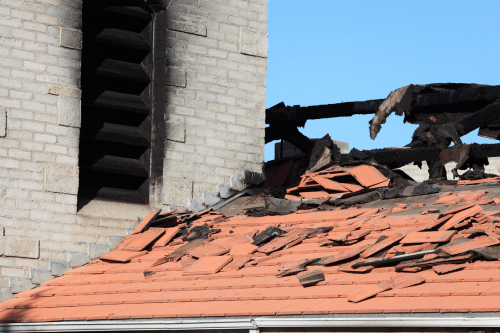
1. Dry Smoke
Dry smoke results from fast-burning, high-temperature fires fueled by materials like wood or paper. This type of smoke leaves a fine, powdery residue that settles on surfaces, making it relatively easier to clean compared to other types. However, the microscopic nature of fine smoke particles allows them to infiltrate deep into materials, making thorough cleaning essential to prevent lingering odors or permanent damage.
2. Wet Smoke
Wet smoke is produced by slow-burning, low-temperature fires fueled by substances like rubber or plastic. It creates a thick, sticky residue that is more challenging to remove and often causes a strong odor. The dense composition of wet smoke particles allows them to cling to surfaces like painted walls, hardwood floors, and upholstery, creating lasting stains and requiring specialized cleaning techniques.
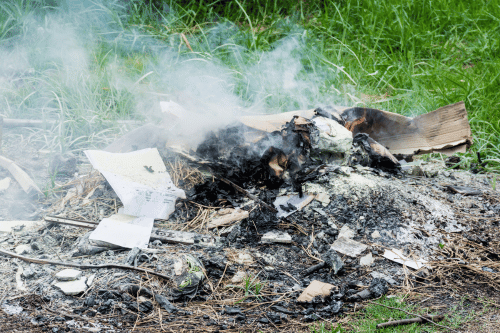
3. Protein Smoke
Protein smoke results from the burning of organic materials, such as food or cooking oil. Though invisible, it can cause permanent discoloration and emit a strong, lingering smell. This type of smoke damage is commonly encountered in kitchen fires and can also affect HVAC systems, spreading the odor throughout the property.
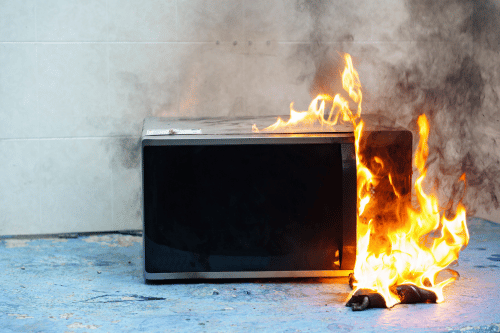
4. Fuel Smoke
Fuel smoke originates from fires involving petroleum-based materials. This type of smoke leaves oily residues that can stain surfaces and pose significant cleaning challenges. If left untreated, fuel smoke residues can corrode metal surfaces and permanently damage porous materials.
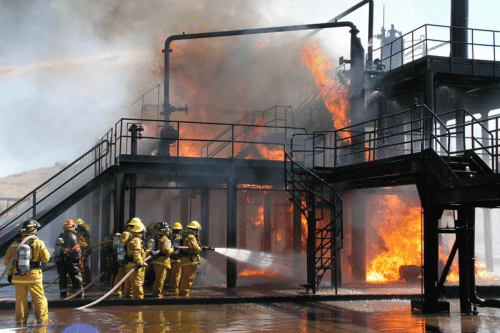
How Smoke Damage Affects Your Property
Smoke damage can affect various elements of a property, including:
Structural Elements: Smoke particles can penetrate porous materials like wood and drywall, leading to permanent discoloration and structural damage if left untreated. Over time, untreated smoke damage can compromise the integrity of these materials, requiring costly repairs or replacements.
Painted Walls and Wall Coverings: Smoke residue can cause visible stains and require specialized cleaning methods. Incorrect cleaning agents may worsen the damage, making it crucial to use appropriate techniques and products.
Hardwood Floors: Fine smoke particles can seep into cracks, affecting the finish and integrity of the wood. Regular maintenance and proper sealing can mitigate long-term effects.
HVAC Systems: Smoke and soot can infiltrate ductwork, spreading harmful chemicals throughout the property. A contaminated HVAC system not only worsens air quality but can also perpetuate odors and smoke damage.
Metal Surfaces: Corrosion may occur if smoke residue is not cleaned promptly. This is especially true for surfaces exposed to high temperatures during the fire.
Upholstered and Wood Furniture: These porous materials are particularly vulnerable to absorbing smoke odors and soot. Cleaning these items requires careful handling to avoid further damage.
Health Risks Associated with Smoke Damage
Exposure to smoke damage poses serious health risks, including:
Respiratory Issues: Inhalation of fine smoke particles can cause breathing difficulties and aggravate conditions like asthma. Children, the elderly, and individuals with pre-existing health conditions are especially vulnerable.
Toxic Exposure: Burning plastics and other materials release harmful chemicals that can be hazardous over long periods. Prolonged exposure to these chemicals may lead to chronic health issues.
Skin Irritation: Contact with soot particles and sticky residue may cause skin irritation or rashes. This highlights the importance of wearing protective gear when cleaning smoke-damaged areas.
Carbon Monoxide Poisoning: Fires can leave behind elevated levels of this toxic gas, posing a hidden but deadly risk. Carbon monoxide detectors are essential for ensuring safety after a fire.

Smoke Damage Restoration Process
Effective smoke damage restoration involves several critical steps:
1. Inspection and Assessment
Professionals inspect the property to evaluate the extent of damage and identify affected areas, including hidden spaces like HVAC systems. This step includes testing surfaces for smoke residues and assessing the air quality for harmful particles.
2. Removal of Residues
Specialized tools and methods, such as dry cleaning sponges and alkaline cleaners, are used to remove smoke residue from surfaces. The choice of cleaning method depends on the type of smoke damage and the material being treated.
3. Odor Removal
Techniques like ozone treatments and the use of baking soda help eliminate smoke odor. Advanced deodorizing equipment can neutralize odors trapped in porous materials, ensuring a fresh-smelling environment.
4. Repair and Restoration
Damaged walls, floors, and furnishings are repaired or replaced. Smoke-damaged clothes and porous surfaces may require professional cleaning. Restoration services may also include sealing surfaces to prevent future contamination.
Preventing Permanent Damage
Acting quickly is essential to prevent permanent stains, corrosion, and structural damage. Avoid using the wrong cleaning agents, which can exacerbate the issue. Always consult certified restoration professionals to handle the cleaning process safely and effectively. Timely intervention can save valuable belongings and reduce overall restoration costs.
Conclusion
Understanding what smoke damage entails and how it affects your property and health is critical for effective restoration. It involves more than just visible damage; the underlying effects can be extensive and long-lasting. If you experience smoke damage, consult Preferred Restoration Services for professional assistance. Their expertise ensures thorough cleaning, repair, and restoration, minimizing long-term impacts and health risks. With prompt action and expert guidance, you can restore your property and peace of mind effectively.
Why Choose Preferred Restoration Services in Orange County for Smoke Damage Restoration?
Preferred Restoration Services specializes in smoke damage restoration for properties affected by fires. Our team understands the complexities of smoke and soot damage and is committed to providing thorough and effective solutions.
Comprehensive Services
We handle every step of the smoke damage restoration process, from initial inspection and assessment to complete odor removal and structural repair. Our services are designed to address all aspects of smoke damage, ensuring your property is fully restored.
Trained Professionals
Our experts are equipped to manage challenges such as soot particles, sticky residues, and smoke odors. With specialized tools and techniques, we effectively clean and restore even the hardest-to-reach areas of your property.
Preventative Solutions
To help prevent future damage, we provide practical tips and repairs, including sealing porous materials, improving ventilation, and ensuring your property is better protected against fire-related risks.
Preferred Restoration Services is your trusted partner in Orange County for smoke damage restoration. Our expertise, comprehensive approach, and commitment to quality make us the top choice for restoring your property after a fire.
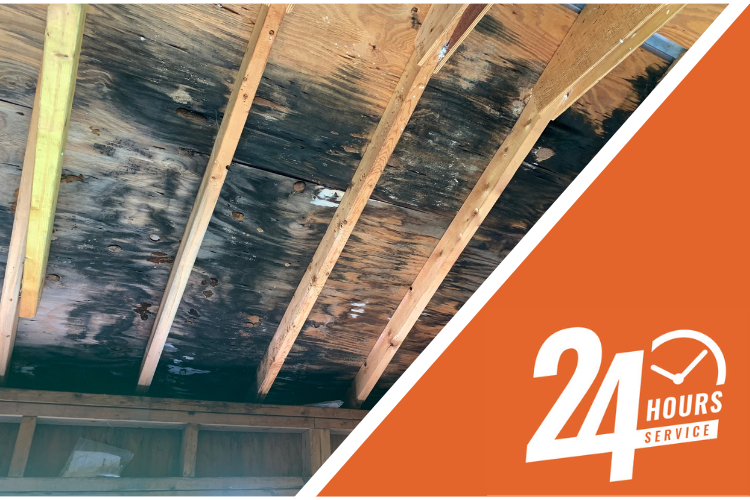
FAQs
What Does Smoke Damage Mean?
Smoke damage refers to the physical and chemical effects of smoke on materials and air quality after a fire. It includes visible residues, odors, and the infiltration of harmful particles into surfaces and structures. Understanding these effects is vital for proper restoration.
How Do You Detect Smoke Damage?
Signs of smoke damage include discoloration, soot deposits, persistent smoke smell, and damage to HVAC systems. Professionals use advanced tools to assess less obvious areas, such as behind walls and inside ventilation systems.
Is It Safe to Stay in a House with Smoke Damage?
Staying in a property with untreated smoke damage is not safe due to health risks like respiratory issues, toxic exposure, and potential structural instability. Immediate action to assess and remediate damage is essential for safety.
What Does Insurance Consider Smoke Damage?
Most insurance policies cover smoke damage resulting from accidental fires, but coverage details may vary. It’s essential to document all damage and consult your insurer for specifics. Understanding your policy can help expedite the claims process.
Table of Contents
EXCELLENTVerified A straight up honest broker who knows his stuff. Excellent communication and very helpful problem solving our mold issuePosted onVerified Giving Eric a 5-star review, and we haven't even started any work yet. He came to gave us his professional opinion and quote to address a mold issue in our house. He is clearly very knowledgeable. His opinion was wildly different than the previous estimate we received, from an agency that wanted to charge us about 4 times as much. He did a much more thorough assessment, and explained his reasoning for why he felt that our issue wasn't as extreme as the previous agency. He even gave us some suggestions as to how we could address our issue on our own, if need be. He doesn't appear "out to get you"... there are a lot of companies that work off the "mold is gold" motto, but he doesn't seem to be one of them. If we end up going with him for the job, we'll update the review... but, I was just so happy and relieved with his approach, estimate, knowledge, and his overall professionalism. Glad there are still people like this out there!Posted onVerified Eric and his team were prompt and professional. From diagnosis through cleanup they were very thorough.Posted onVerified Above and beyond expectations. Eric and his team were not only helpful, kind, and relatable to our issues, they were extremely professional and reliable. Always answered our calls. Showed up on time with great attitudes. Respected our home. Most importantly, got the job done in a fast and timely manner. Can't recommend enough.Posted onVerified We had a leak under the kitchen sink and called another company first. We were told there is mold and they would have to tent the area to remove it and that we'd also need a whole new cabinet. Of course, it was pretty expensive and they said we couldn't use the kitchen for a couple weeks. Feeling it's always wise to get more than one estimate, I called Preferred Restoration as they had excellent reviews. Eric replied promptly and came out to look things over. He felt the mold wasn't bad enough to require a tent and also felt a whole new cabinet was not required. Needless to say, we accepted his estimate immediately and the work was done in a professional manner. (They don't do the carpentry work, but can make a recommendation.) I highly recommend Preferred Restoration. I believe it's an honest company with skilled professionals.Posted onVerified Eric the owner was great to work and keep me informed the entire time that the moisture was being removed from my home. Highly recommend Eric and his team for any job!Posted onVerified Right from the start I knew I was going to be in good hands with this company. The response time was super quick and getting Eric to come out to my home to assess the situation was quicker than expected. Eric was very knowledgeable and answered all my questions thoroughly. He took his time to listen to all my concerns to carefully address the issues in my home. He made a stressful situation feel less stressful and manageable. I definitely recommend this company and will contact Eric if needed in the future. Thanks again Eric!Posted onVerified We discovered a mold issue in one of our bedrooms and reached out to Preferred Restoration Services for guidance. Eric was extremely helpful in helping us navigate what needed to be done since we had no experience with this type of issue. He shepherded us through the process and helped us understand every step that needed to be performed. He referred us to a couple of contractors which we used for plumbing and testing and they were also excellent. This was helpful so that we didn't have to figure out who else we needed to work with and vet them as well. Everyone from Preferred Restoration Services was very professional, communication was excellent, and customer service was outstanding. We had a lot of questions and they were all answered very quickly. I highly recommend Preferred Restoration Services for any damage restoration needs.Posted onVerified Preferred Restoration is the best service in town! If you want quality, fair pricing & guidance, call Preferred Restoration! Ask for Eric, he is very helpful and quick.Posted onVerified We had an issue with a sewer line that leaked and potentially needed some soil remediation under the house. I gave Eric a call and made an appointment for the next day for him to come out and assess the situation. Throughout the process his communication was great and he was on time (even gave me a call to let me know he was on his way). He went above an beyond to even check inside the house for potential water damage/mold. We did not have to move forward with any remediation. I appreciate Eric's communication, thoroughness, and HONESTY. We will keep his contact if we need any work in the future. I highly recommend Eric and Preferred Restoration!
Table of Contents
EXCELLENTVerified A straight up honest broker who knows his stuff. Excellent communication and very helpful problem solving our mold issuePosted onVerified Giving Eric a 5-star review, and we haven't even started any work yet. He came to gave us his professional opinion and quote to address a mold issue in our house. He is clearly very knowledgeable. His opinion was wildly different than the previous estimate we received, from an agency that wanted to charge us about 4 times as much. He did a much more thorough assessment, and explained his reasoning for why he felt that our issue wasn't as extreme as the previous agency. He even gave us some suggestions as to how we could address our issue on our own, if need be. He doesn't appear "out to get you"... there are a lot of companies that work off the "mold is gold" motto, but he doesn't seem to be one of them. If we end up going with him for the job, we'll update the review... but, I was just so happy and relieved with his approach, estimate, knowledge, and his overall professionalism. Glad there are still people like this out there!Posted onVerified Eric and his team were prompt and professional. From diagnosis through cleanup they were very thorough.Posted onVerified Above and beyond expectations. Eric and his team were not only helpful, kind, and relatable to our issues, they were extremely professional and reliable. Always answered our calls. Showed up on time with great attitudes. Respected our home. Most importantly, got the job done in a fast and timely manner. Can't recommend enough.Posted onVerified We had a leak under the kitchen sink and called another company first. We were told there is mold and they would have to tent the area to remove it and that we'd also need a whole new cabinet. Of course, it was pretty expensive and they said we couldn't use the kitchen for a couple weeks. Feeling it's always wise to get more than one estimate, I called Preferred Restoration as they had excellent reviews. Eric replied promptly and came out to look things over. He felt the mold wasn't bad enough to require a tent and also felt a whole new cabinet was not required. Needless to say, we accepted his estimate immediately and the work was done in a professional manner. (They don't do the carpentry work, but can make a recommendation.) I highly recommend Preferred Restoration. I believe it's an honest company with skilled professionals.Posted onVerified Eric the owner was great to work and keep me informed the entire time that the moisture was being removed from my home. Highly recommend Eric and his team for any job!Posted onVerified Right from the start I knew I was going to be in good hands with this company. The response time was super quick and getting Eric to come out to my home to assess the situation was quicker than expected. Eric was very knowledgeable and answered all my questions thoroughly. He took his time to listen to all my concerns to carefully address the issues in my home. He made a stressful situation feel less stressful and manageable. I definitely recommend this company and will contact Eric if needed in the future. Thanks again Eric!Posted onVerified We discovered a mold issue in one of our bedrooms and reached out to Preferred Restoration Services for guidance. Eric was extremely helpful in helping us navigate what needed to be done since we had no experience with this type of issue. He shepherded us through the process and helped us understand every step that needed to be performed. He referred us to a couple of contractors which we used for plumbing and testing and they were also excellent. This was helpful so that we didn't have to figure out who else we needed to work with and vet them as well. Everyone from Preferred Restoration Services was very professional, communication was excellent, and customer service was outstanding. We had a lot of questions and they were all answered very quickly. I highly recommend Preferred Restoration Services for any damage restoration needs.Posted onVerified Preferred Restoration is the best service in town! If you want quality, fair pricing & guidance, call Preferred Restoration! Ask for Eric, he is very helpful and quick.Posted onVerified We had an issue with a sewer line that leaked and potentially needed some soil remediation under the house. I gave Eric a call and made an appointment for the next day for him to come out and assess the situation. Throughout the process his communication was great and he was on time (even gave me a call to let me know he was on his way). He went above an beyond to even check inside the house for potential water damage/mold. We did not have to move forward with any remediation. I appreciate Eric's communication, thoroughness, and HONESTY. We will keep his contact if we need any work in the future. I highly recommend Eric and Preferred Restoration!


